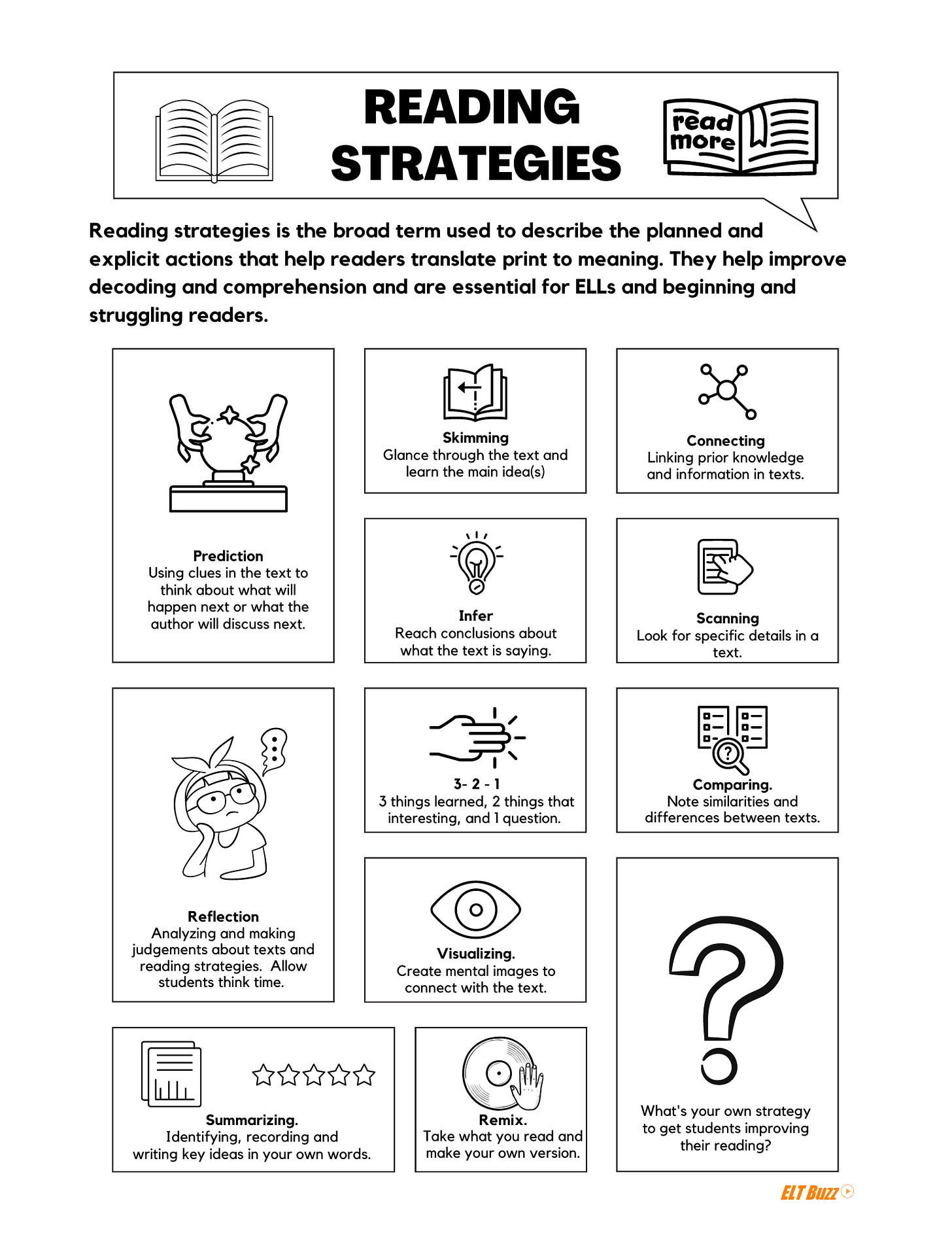Linkedin | Videos | Blog | Printables | ELT News | TpTs | Youtube Channel
[Please see our other posts about the skill of reading and general teaching strategies for English language learners. Also, this YouTube video we produced.]
Reading, it’s not as simple as you think to teach. You can’t just simply ask students to open a book and read and magically they’ll improve. There are some skills that need to be focused on and developed in learners. A teacher can offer a lot of help to students as they learn to read and practice their reading.
“Reading strategies” is a broad term used to describe the planned and explicit actions that help readers translate print to meaning. They help improve decoding and comprehension and are essential for ELLs and beginning and struggling readers.
Here is a rundown of some main reading strategies. Download the full PDF »>
Here is a list of the reading strategies we most recommend teachers use. See the chart below for their best implementation - which reading level and what part of the lesson.
Predicting: The reader guesses what words come next and what will happen later in the reading passage. Ask students what will happen next?
Skimming: A form of previewing. The reader goes over the reading quickly to find out specific information (scanning) or the main idea or “gist”(skimming)
Connecting: The reader relates the text to their own life, to similar texts and to what’s happening in the wider world.
Inferring: The reader guesses or predicts what words come next and what will happen later in the reading passage.
Scanning: A form of previewing. The reader goes over the reading quickly to find out specific information (scanning) or the main idea or “gist”(skimming)
Analyzing: The reader thinks about what they like and don’t like about the text. What the author’s intended meaning is and other questions.
Comparing: The reader notes differences and similarities between one text and other similar texts.
Visualizing: The reader forms pictures in their head and “imagines” the text as they read.
Reflecting: The reader thinks about the text and reflects on its meaning, importance and how it informs them - what it teaches and suggests. Personal summary.
Summarizing: The reader synthesizes the text and brings everything together to retell and review what they have read.
Remixing: The reader takes a text and alters it to make it their own but still using the same format and other characteristics.
Decoding: The reader sounds out the text and uses their phonemic awareness to link text to meaning and sound.
Contextualizing: The reader previews the text and thinks about what they know about the topic and the particular genre of writing. A prompting of background knowledge and schema.
When and with who to use each reading strategy (suggested)
Also, watch this Edutopia video with some good advice to throw out some popular reading strategies that simply don’t work well or give much “bang for your buck”.
Thanks for reading!
David - Chief ELT Buzzer





